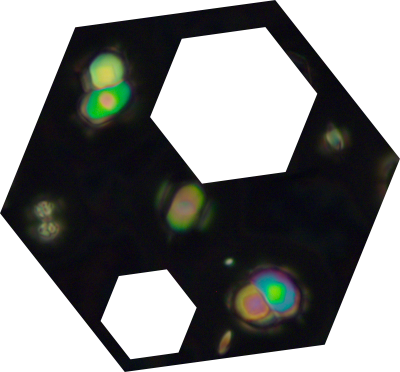Building as Being
BackThe Building as Being project looks at building in the widest sense of the word, approaching it as ordering elements (atoms, molecules, bricks, words, feelings) into shapes (molecules, crystals, bodies, houses, cities, minds). Thereby, an element can form a shape and a shape can become an element, whereby unexpected and complex new forms emerge and dissolve from interacting components within enviroments.
Building as Being explores building from a geological, chemical, biological, artistic and philosophical perspective: what does it mean to build today, how did building evolve over time and how shall we build in the future?
This project starts with the etymology of the word building, coming from the Old-English byldan, ‘constructing a house’, derived from the Proto-Indian European bhu-, ‘to dwell’ with the root bheue-, ‘to be, exist, grow’.
Interestingly, in our contemporary use of the word, the verb building often implies a constructor, someone who builds, and often also an architect, someone who designs what will be built.
However, when we ponder over the Proto-Indian-European root of building, building as growing and being, we can question if this inherent meaning is lost, or is essentially still present.
Do buildings, cities and infrastructures always require constructors, architects and masterplans, or can they grow without humans as ultimate controllers? Would it be possible to build like a shell and grow our houses out of seawater? Can we build like coral reefs, whereby organisms and geochemical cycles interact with- and sustain each other?
Interactive Building Experiments
With Building as Being, I investigate the possibility of building as growing, existing and being, in collaboration and in dialogue with IAS researchers, Waag and the Self-Organizing Matter group, artists and architects.
With my Interactive Building Experiments I aim to grow new architectural shapes and materials through the interaction of unexpected actors, covering a wide range of spatial and temporal scales. Actors involved in these multiscale experiments are non-living materials (e.g. minerals, metals), organisms (scientists, dancers, human and non-human architects, trees, plants, bees, oysters, wasps, spiders, ants), organismal residues (e.g. breath, human fluids, organic materials and biopolymers such as plant fibers, lignin, chitin) and energy sources (e.g. sunlight, songs and other soundwaves, gravity, bodily warmth, lightning).
Crystallising Blobs of Order
In the series shown here, I'm mixing bodily fluids with minerals, whereby shell-like structures and coral reef-like landscapes are grown through the interactions of dissolved minerals and body cells, such as blood cells, sperms cells and breast milk.
With this project I question if these cells become unicellular again once they leave the human body. And I like to be surprised the 'biomineral shelters' they form.
Sperm Shells
I'm intrigued by how the growth and dissolution of crystals in solutions can be compared to other growth and decay systems, where shapes 'temporarily' precipitate from an environment, such as individuals within communities, organisms within ecosystems, bodies within universes, thoughts within minds.
Building as Being is part of my ArtScience Fellowship at the Uva-Institute for Advanced studies, fellowship at Waag and guest researcher position at the Self-Organizing Matter group (AMOLF).
Urban Ecology: Building as Being
During the Urban Ecology: Building as Being lecture series, developed for the Rotterdam Academy of Architecture, we explored connections between Ecology and Architecture.
Ecology studies the relationship between organism & environment, from οἶκος, meaning 'house', and λογία 'study', while Economy means house management.
Architecture, from the Greek ἀρχιτέκτων, from ἀρχι- ‘chief’ and τέκτων ‘creator’.
How do we combine creation and management, with being an organism in an environment?
The RAVB lecture series explored the bigger systems we are part of, as human beings, and as architects/urbanists. Invited speakers traced back the origins of architecture, beyond the human and beyond the living, drawing from the fields of geology, chemistry, biology, philosophy and neurobiology.
All lectures, including the presentations for Interventions for Amsterdam Science Park by the students, can be found here.
Build like a Beast
During the Interactive Building Worshop with kids, we explored what it means to build a home, by listening, exploring, drawing, collecting, and of course: by building like an animal.
What can we learn from how animals grow their houses, and can we build like a beast ourselves? Together with Nature Optimist Thijs de Zeeuw, we went on an expedition to explore Animal Houses on the Amsterdam Science Park, and visited an ecological beekeeper at Jeugdland. Along the way, we tasted honey and collected materials to build our beastly huts.
Photo left by Nanne Brouwer.
For more photo's of this 2-day Building workshop, in collaboration with Jeugdland and Waag, see the collection by Waag here
Photo by Florian Geerken
Photo by Florian Geerken
Next recommended article:
